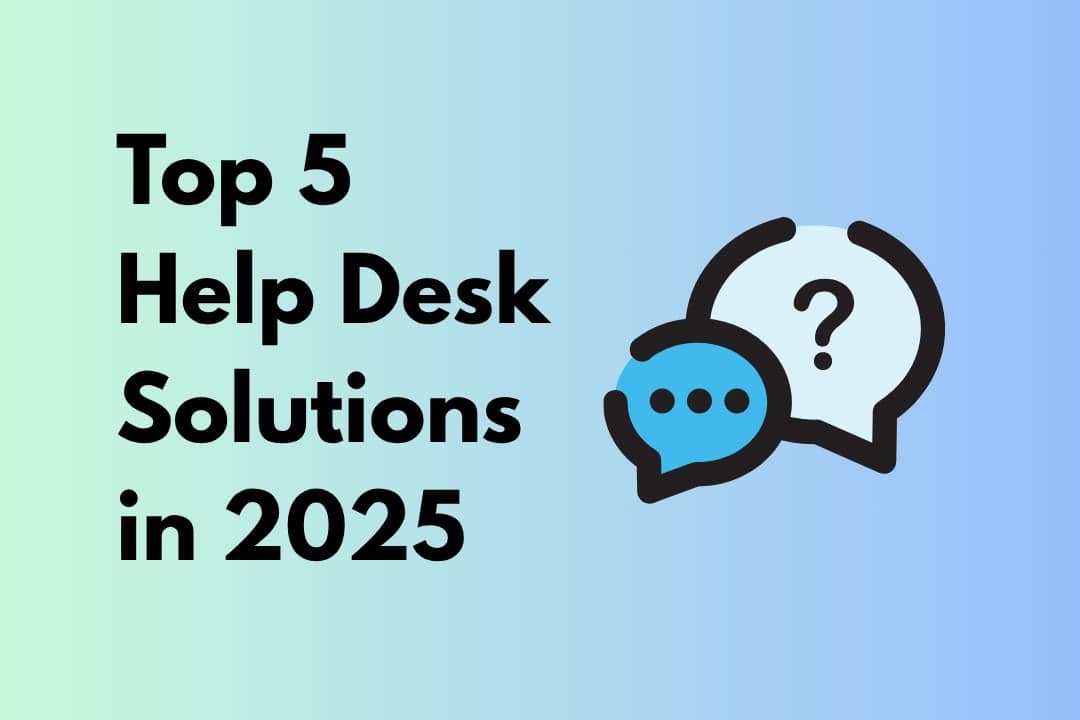C hoosing the right help desk solution is crucial for organizations aiming to improve support efficiency, streamline issue resolution, and boost user satisfaction. In this article, we’ll explore the top five help desk systems available in 2025, breaking down their pros and cons to help you make an informed decision. We’ll look at each platform’s features, usability, integration capabilities, and value for money—culminating in why NITRO Help Desk stands out as the top choice, especially for organizations using Microsoft 365 or SharePoint.
hoosing the right help desk solution is crucial for organizations aiming to improve support efficiency, streamline issue resolution, and boost user satisfaction. In this article, we’ll explore the top five help desk systems available in 2025, breaking down their pros and cons to help you make an informed decision. We’ll look at each platform’s features, usability, integration capabilities, and value for money—culminating in why NITRO Help Desk stands out as the top choice, especially for organizations using Microsoft 365 or SharePoint.
Help Desk Solutions Comparison Chart
| Help Desk Solution | Best For | Key Pros | Key Cons |
|---|---|---|---|
| 1. NITRO Help Desk | Microsoft 365/SharePoint organizations | – Deep Microsoft integration – Customizable workflows – Affordable one-time licensing – AI-powered automation |
– Best for Microsoft environments – May be too advanced for basic needs |
| 2. Zendesk | Customer-facing support teams | – Sleek UI – Strong omnichannel support – Robust integrations |
– High cost at scale – Limited deep customization |
| 3. Freshdesk | Retail and e-commerce | – Free plan available – Easy setup – Omnichannel ticketing |
– Advanced features cost extra – Basic Microsoft integration |
| 4. ServiceNow | Large enterprise environments | – Highly scalable – Advanced ITSM features – Rich reporting tools |
– Very expensive – Steep learning curve |
| 5. Jira Service Mgmt | DevOps and technical teams | – Seamless with Jira – Agile-focused workflows – Cost-effective |
– Not ideal for general support – Complex setup for non-technical users |
1. NITRO Help Desk – Best for Microsoft 365/SharePoint-Centric Organizations
Overview:
NITRO Help Desk by Crow Canyon Software is purpose-built for organizations that use Microsoft 365, Teams, or SharePoint. It delivers a powerful, flexible, and highly customizable platform without the complexity or high costs associated with other enterprise-grade systems.
Pros:
-
Deep integration with Microsoft 365, Teams, and SharePoint
-
Customizable forms, workflows, and dashboards
-
AI-powered automation via NITRO Copilot
-
Scalable licensing
-
Integrates with asset management, purchasing, and more
Cons:
-
Best suited for organizations already using Microsoft tools
-
May be too feature-rich for single tech teams
Best For:
Public sector, education, healthcare, and mid-size businesses on Microsoft 365
2. Zendesk – Best for Omnichannel Support
Overview:
Zendesk is a popular cloud-based help desk solution known for its sleek interface and strong multi-channel capabilities.
Pros:
-
Excellent ticket management and customer support tracking
-
Powerful automation and SLA features
-
Integrates with a wide array of apps and services
Cons:
-
Expensive as teams scale
-
Customization is limited without paying for higher tiers
-
Lacks deep Microsoft 365/SharePoint integration
Best For:
Customer-facing teams in B2C and SaaS businesses
3. Freshdesk – Best for Startups and Small Businesses
Overview:
Freshdesk is a user-friendly platform with a free tier, making it ideal for retail and e-commerce. It offers omnichannel ticketing, automation, and a modern UI.
Pros:
-
Easy to set up and use
-
Affordable pricing with free and low-cost tiers
-
Offers both support and sales functionality
Cons:
-
Limited advanced features on lower plans
-
Workflow automation lacks depth compared to enterprise tools
-
Microsoft ecosystem integration is minimal
Best For:
Retail and e-commerce businesses
4. ServiceNow – Best for Large Enterprises
Overview:
ServiceNow is a heavyweight in the enterprise ITSM space, offering a broad set of tools for complex workflows, compliance, and global support.
Pros:
-
Highly scalable and customizable
-
Ideal for complex enterprise environments
-
Strong reporting and SLA management
Cons:
-
Very expensive
-
Steep learning curve and resource-heavy implementation
-
Overkill for many mid-size organizations
Best For:
Fortune 500 companies and large IT departments
5. Jira Service Management – Best for Technical Teams
Overview:
Developed by Atlassian, Jira Service Management is geared toward software teams and organizations already using Jira for project management.
Pros:
-
Great for dev-centric workflows and incident tracking
-
Seamless integration with Jira Software
-
Affordable for smaller tech teams
Cons:
-
Not designed for non-technical users or general support teams
-
Requires expertise to configure workflows and automations
-
UI can be intimidating for casual users
Best For:
DevOps teams, software companies, and tech-heavy environments
Conclusion: Why NITRO Help Desk Ranks #1
While all five solutions offer unique advantages, NITRO Help Desk rises above the rest for organizations in the Microsoft ecosystem. Its seamless integration with Microsoft 365, AI-driven automation, customization flexibility, and cost-effective pricing make it a standout choice for public sector, education, healthcare, and business teams alike. If you’re looking for a help desk that adapts to your organization—not the other way around—NITRO Help Desk is the clear winner.
Which help desk solution fits your organization’s needs best—and what are the must-haves on your list?


